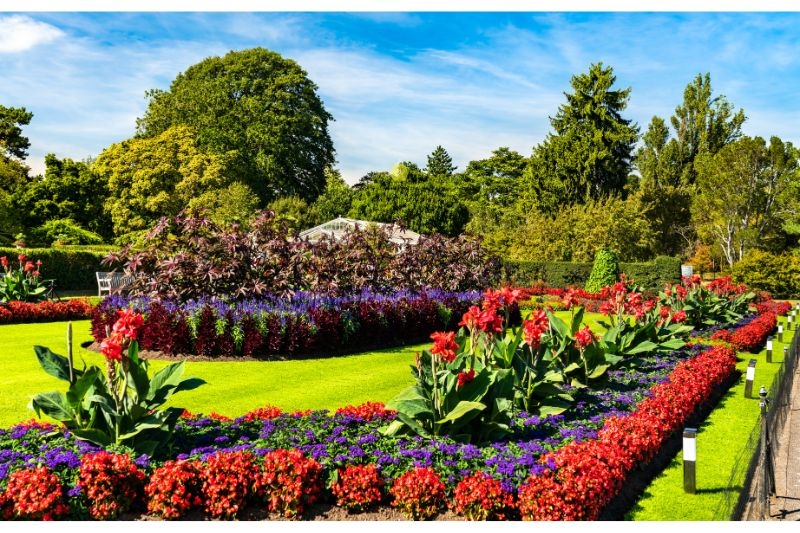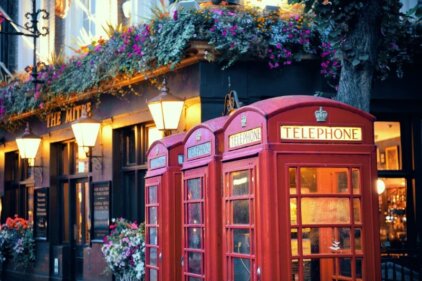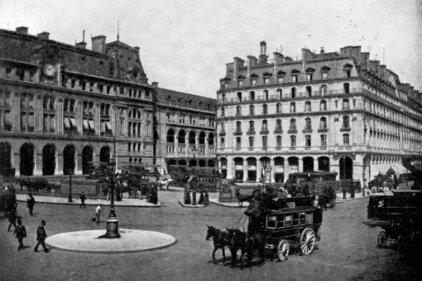Rare and exotic plants in London’s Royal Botanic Gardens
At the forefront of London’s botanical wonders lies the renowned Royal Botanic Gardens, Kew. This UNESCO World Heritage site is a true paradise for plant enthusiasts, boasting an unparalleled collection of rare and exotic species. From the towering glasshouses that house tropical plants to the meticulously curated outdoor gardens, Kew Gardens is a veritable treasure trove of botanical diversity. I’ve been fortunate to visit on numerous occasions, and each time, I’m struck by the sheer beauty and uniqueness of the plants on display.
Exploring the hidden gems of Kew Gardens
Beyond the well-known attractions of Kew Gardens, there are numerous hidden gems waiting to be discovered. The Waterlily House, for instance, is a true marvel, showcasing the vibrant blooms of the Victoria water lily, one of the largest and most impressive aquatic plants in the world. The Rock Garden, with its cascading waterfalls and alpine flora, offers a serene respite from the bustling city. And the Arboretum, home to an extensive collection of trees from around the globe, is a must-visit for nature enthusiasts.
The enchanting gardens of Hampton Court Palace
Another iconic London destination that boasts a remarkable array of flora is Hampton Court Palace. This historic royal residence, with its beautifully manicured gardens, is a true feast for the senses. From the formal, symmetrical layouts of the Privy Garden to the whimsical maze and the stunning Orangery, the grounds of Hampton Court are a botanical wonderland. I’ve spent countless hours wandering through these enchanting gardens, marveling at the diverse plant life and the rich history that surrounds it.
Discovering unique flora in London’s public parks
While the Royal Botanic Gardens and historic palaces are undoubtedly the crown jewels of London’s botanical landscape, the city’s public parks also harbor a wealth of rare and unique plant life. Parks like Hampstead Heath, Richmond Park, and Bushy Park are home to a surprising array of flora, from ancient oak trees to vibrant wildflowers. These green spaces provide a much-needed respite from the urban hustle and bustle, offering visitors the opportunity to immerse themselves in the natural world.
The role of community gardens in preserving rare plants
Alongside the grand, manicured gardens of London, a network of community gardens and allotments play a vital role in preserving the city’s botanical diversity. These grassroots initiatives, often run by dedicated volunteers, provide a platform for the cultivation and conservation of rare and endangered plant species. I’ve been inspired by the passion and dedication of the individuals who tend to these community gardens, ensuring that the unique flora of London continues to thrive and be appreciated by future generations.
Sustainable gardening practices in London
As the world becomes increasingly conscious of environmental sustainability, London’s gardeners and horticulturists have embraced eco-friendly practices to ensure the long-term health and vitality of the city’s flora. From the use of organic fertilizers and water-saving techniques to the promotion of native and drought-resistant plants, the capital’s gardening community is leading the way in sustainable horticulture. I’ve been particularly impressed by the efforts of organizations like the Royal Horticultural Society, which have championed these sustainable practices and educated the public on the importance of environmentally conscious gardening.
Tips for visiting London’s botanical gardens and parks
For those looking to explore the remarkable flora of London, I highly recommend visiting the city’s world-class botanical gardens and parks. Whether you’re a seasoned plant enthusiast or simply someone who appreciates the beauty of nature, these green oases offer a wealth of opportunities for discovery and exploration. Here are a few tips to make the most of your visit:
- Plan your itinerary: With so many exceptional gardens and parks to choose from, it’s essential to plan your visit in advance to ensure you don’t miss out on the must-see attractions.
- Dress for the weather: London’s climate can be unpredictable, so be sure to dress in layers and bring appropriate footwear to navigate the often-expansive grounds.
- Explore at your own pace: Take your time to wander and immerse yourself in the botanical wonders around you. Don’t be afraid to get lost in the beauty of these green spaces.
- Engage with the staff: The knowledgeable staff and volunteer guides at these gardens and parks are a wealth of information. Don’t hesitate to ask questions and learn more about the plants you encounter.
- Bring a camera: The stunning flora of London’s gardens and parks is truly photogenic. Be sure to capture the beauty of these natural wonders to cherish long after your visit.
Conclusion: The beauty and diversity of London’s flora
As I reflect on my experiences exploring the enigmatic flora of London, I’m struck by the sheer beauty and diversity of the plant life that thrives within the city’s borders. From the grand, historic gardens of the royal palaces to the hidden gems of the community plots, London’s botanical landscape is a true testament to the city’s commitment to preserving and celebrating the natural world. Whether you’re a seasoned plant enthusiast or simply someone who appreciates the beauty of nature, I encourage you to venture forth and discover the enchanting flora that makes London a truly unique and captivating destination.





